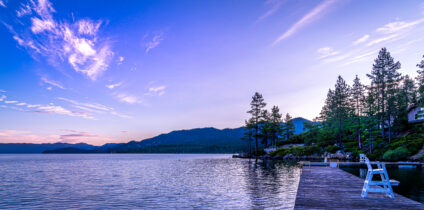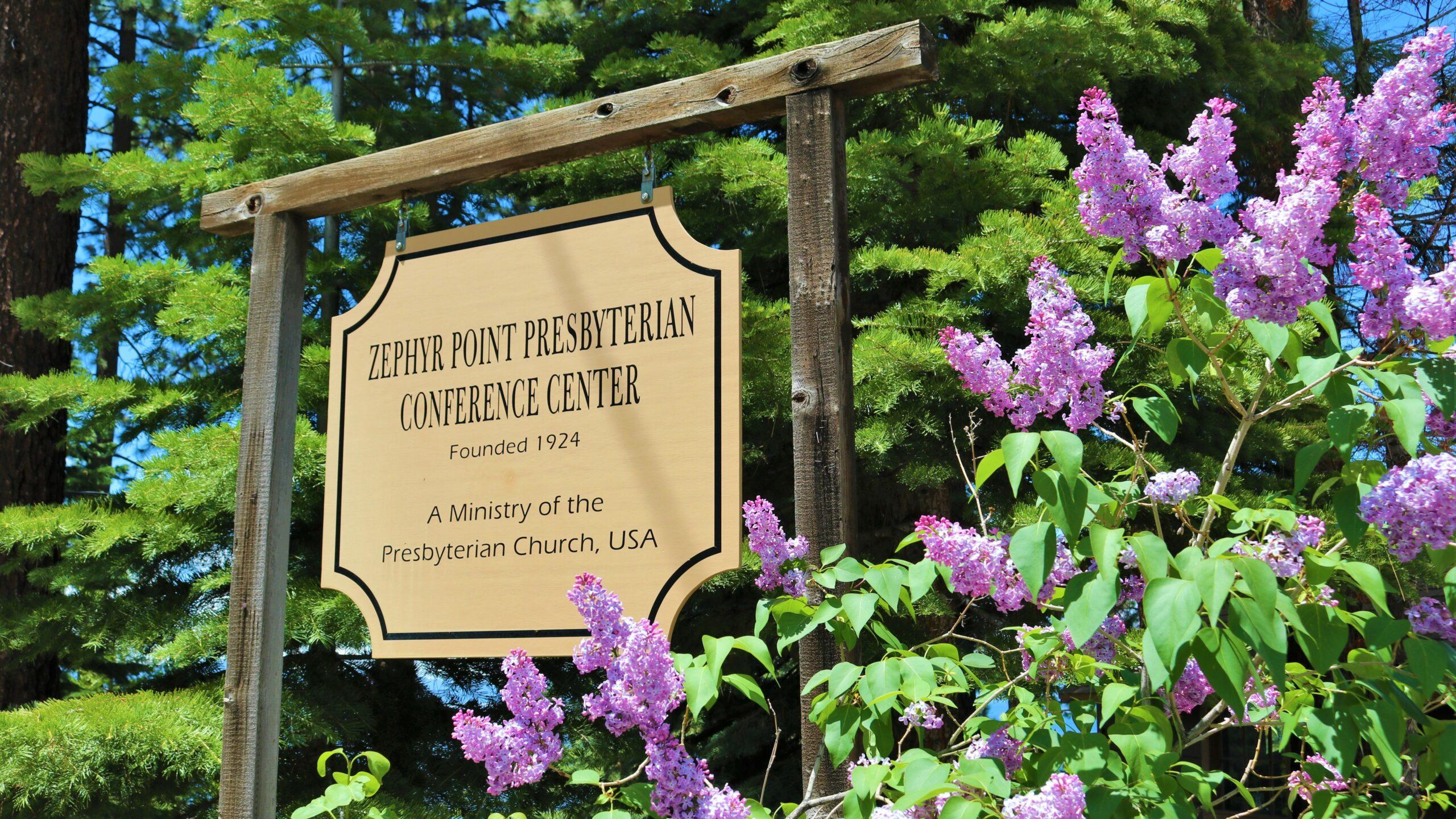
Zephyr Point Presbyterian Conference Center, inviting all to experience God through education, exploration, and inspiration.
A center of excellence cultivating spiritual growth, recreation, and learning in an inclusive environment of natural beauty, hospitality, and peace.
Serving with love
Creating community
Caring for and learning from Creation
Engaging the mind, refreshing the body, nurturing the soul
Welcoming all people
We care about the health and safety of our guests, staff and volunteers. Learn more about our Covid-19 protocols here.
Since 1924 Zephyr Point Presbyterian Conference Center has provided rest, rejuvenation and recreation for thousands. From its humble beginnings when guests camped in tents on the rugged lakeside, Zephyr Point has developed into a modern Camp and Conference Center with a variety of housing options and meeting space that can accommodate groups of up to 300.
Zephyr Point’s history began during the Roaring Twenties when the Presbyterian Synod of California was contemplating new and inspirational experiences for its young people. Dr. Robert Donaldson of the Board of National Missions in San Francisco Presbytery scheduled the first Young People’s Conference at Lake Tahoe for the summer of 1924.
For almost 100 years guests of Zephyr Point have grown in knowledge, gained inspiration for their faith, and enjoyed the wonders of God in nature through the rugged beauty of the Tahoe Basin.
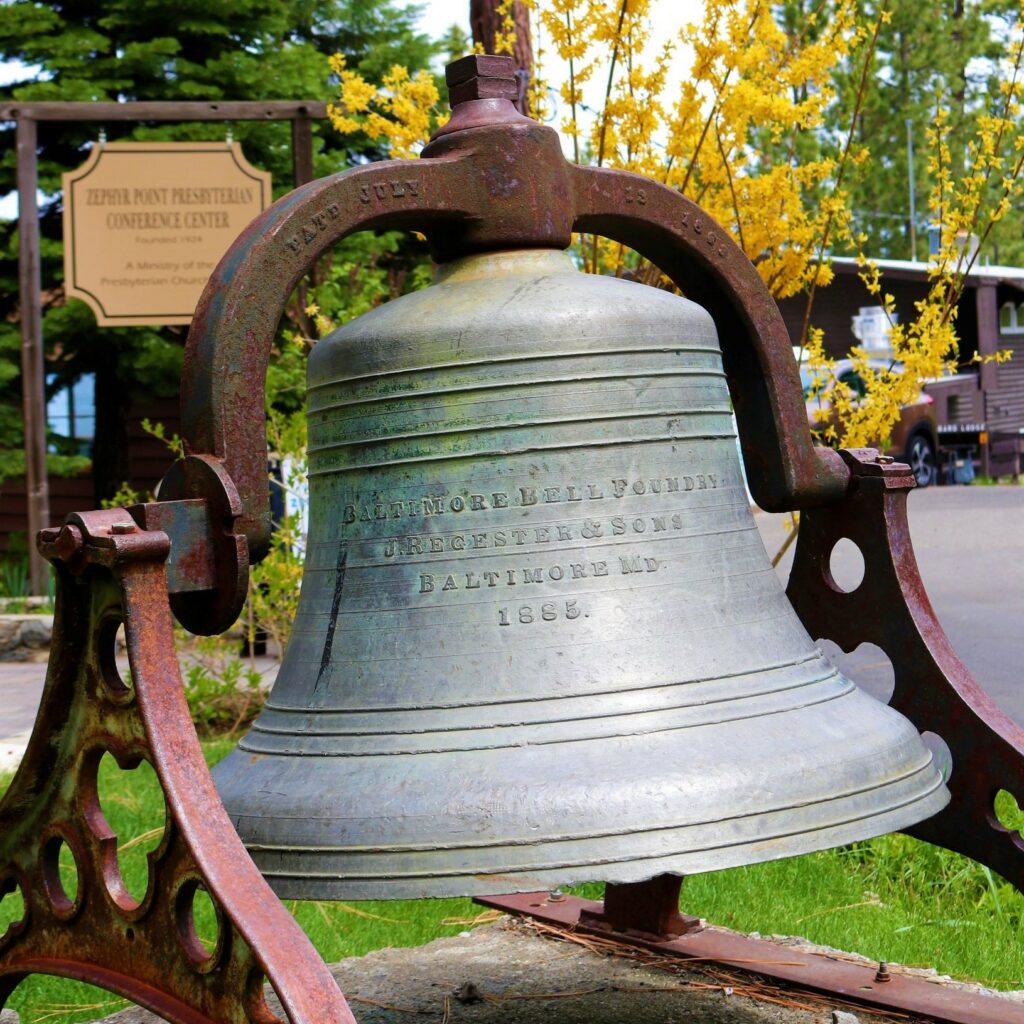
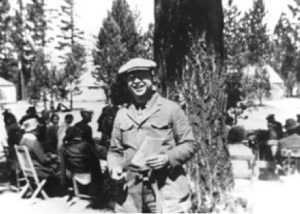
Zephyr Point’s history began during the Roaring Twenties when the Presbyterian Synod of California was contemplating new and inspirational experiences for its young people. Dr. Robert Donaldson of the Board of National Missions in San Francisco Presbytery scheduled the first Young People’s Conference at Lake Tahoe on the calendar for the summer of 1924, but the site was unknown at that time.
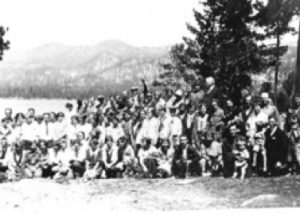
Rev. Harvey was aware of a particular 36-acre spot just south of Zephyr Cove which was said to be on the market. It was a historic point owned by the Comstock Mining Company, which over the decades had strip-cut thousands of trees from the forests of Tahoe and hauled them to Virginia City for use in the silver mines. Harvey suggested this location for Dr. Donaldson’s experimental youth conference.
A commitment of $6,000 was needed to purchase the property, so three members of the Synod presented $1,000 cash and personally signed a promissory note for $5,000 to purchase the property. Later that summer, over 100 people made the rigorous journey to Zephyr Cove that summer for the conference.
In order to raise money to pay for this property, the group decided to “auction” 10-year leases to Presbyterians who wanted land to camp or build a cabin for the summer months. Commissioner Rev. Otis Linn and his college student intern, Clawson, marked off lots, driving white painted stakes for boundaries. Lots were roughly 30 feet wide, varying because of rocks, steep terrain and the inexperience of the “surveyors.” During “Homestead Week” July 31-August 6, 1925 each person drew a number, and he/she selected a lot of his/her choice based on their randomly selected number. The lakefront lots obviously were chosen first, but most people were satisfied with their draw. The lots were to be returned to the Synod in 1935.
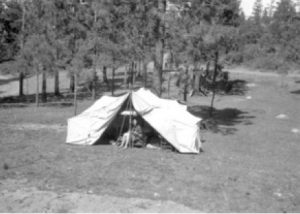
Two large wooden platforms were built in 1926 to provide quarters for conference delegates. The platforms had partitions providing many sections and were covered with huge horse tents from World War I Army surplus.
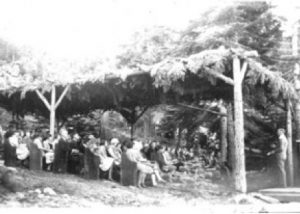
A formal gathering place for worship was deemed necessary. A thatch-covered frame was erected to provide a very lovely setting for outdoor services. The structure was called the Pergola and was located about where Robin’s Flight now ends.
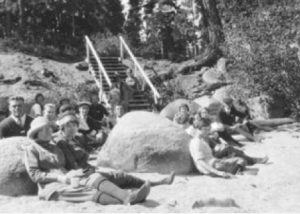
In 1935, the Commission decided to hire a contractor to clear a beach and build two breakwaters for $943. However, the beach was not totally satisfactory, and the breakwater did not stand up well to the most severe storms. The Leaseholders Association promoted a new effort in 1947 and promised financial assistance. The present contour of the beach was completed in 1948 along with a boathouse and the present breakwater.
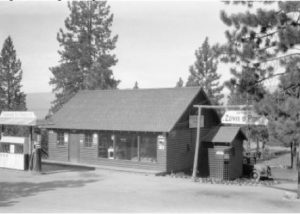
The Zephyr Point Store was first located at the base of the hill (near the base of Robbins Flight). Bill and Ruth Clawson spent their honeymoon operating the store in 1931. A later store was located near the highway up the hill and for a time gasoline and other supplies were sold. The old store is the current Cabin 91.
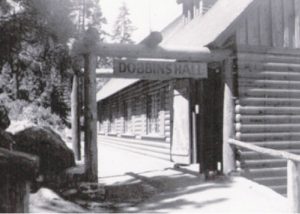
The Synod was invited to visit Zephyr Point for its annual meeting in 1937. The motion mentioned accommodations for 400 and auditorium seating for 500, well beyond the capacity of the Point. This is when what is now referred to as Dobbins Hall was built. At the climax of that Synod meeting was a dedication of the auditorium/dormitory where it was announced that the Dobbins family had contributed funds so the building could be free from debt.
It was at the 1937 Synod meeting that Mrs. Dobbins took notice of the precarious descent via the old wooden staircase from the landing above. On her husband’s birthday, she was moved to donate $1,000 toward the eventual installation of the beautiful rock staircase which came to be called “Robin’s Flight” after Mrs. Robin Dobbins. The flight began as a waterfall, complete with fish. Flowers were more fitting, however, and a lovely attraction was born.
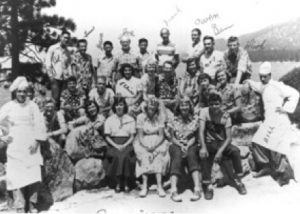
A group of young people and their supervisors came to be known as “The Crew” and they comprised the working staff at Zephyr. A crew consisted of eight members in the beginning to seventeen by the outbreak of World War II. Early crew members received $40 a month for uncounted hours and an endless variety of chores. In 1958, a lodge finally was constructed for the crew. Later, it was renamed, and converted to conference use in honor of Frank and Helen Hubbard.
Twice the grounds have been visited by the ravages of fire. In 1947, eight cabins were destroyed when a Marla Bay neighbor allowed a brush-clearing project to get out of hand. Fortunately, there was no loss of life.
Then again in 1975, a renter regrettably placed what were thought to be cold ashes in a cardboard box on the dry deck of the cabin. On returning to the Point after several hours away, three cabins were discovered in flames. Jim Upshaw, a leaseholder at the time whose cabin was a victim of the fire, in his usual upbeat fashion, saw some good from the incident. It revealed the inadequacies of Zephyr Point fire protection and led to improvements!
From the first conference, pit toilets served the need, and gray water was thrown into the bushes. As the use of the grounds increased, flush toilets and sumps were installed, but the issue persisted. The sumps required frequent pumping to operate properly. Installation of septic tanks came next, but increasing contamination was detected throughout the Tahoe Basin. Public pressure to protect the clarity of Lake Tahoe was mounting. In 1967 the Nevada Department of Health issued an order to cease holding conferences until the matter was corrected.
With no conferences on the grounds, Zephyr Point essentially was out of business. Funds were raised by leaseholders, and friends and alumni of Zephyr Point to install lines and a pump station to comply with the regulations. The project took seven years, costing over $200,000. Conferences did not resume until 1974.
In the early 1980s, about four acres of Zephyr Point was used for conferences. Further study and discussion underscored the need for more conference space, but building restrictions in the Tahoe Basin had to be met. It was then that both the Zephyr Point Management Commission and the Lake Tahoe Presbyterian Conference Commission concurred in a most difficult decision. They voted that the leases entered into in 1986 would be non-renewable. The final leases expired on January 1, 2001.
On December 26, 1995, the Tahoe Conference Center facility was opened. It consisted of three lodges offering hotel accommodations with 43 rooms, meeting rooms, and dining along with a new and improved roadway. In 1996, nearly 12,000 guests stayed in the Tahoe Center.
But with accommodations filled to capacity in all the more popular time periods, nearly 200 group requests for conference dates had to be denied every year. Prayerful consideration of these and other factors led to an eight-and-a-half million dollar expansion proposal to build another, larger lodge/dining complex. The Tallac Center was formally dedicated on September 24, 2005. The Tallac Lodge contains 59 rooms, with 126 queen beds.
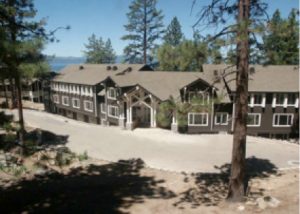
The Tahoe Conference Center
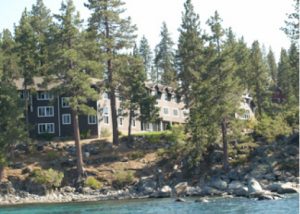
The Tallac Center
After 81 years of hosting thousands of people, it was time for a renovation to Dobbins Hall. A groundbreaking ceremony was held on August 25th, 2018. Work was completed and a Re-dedication ceremony was held on August 25th, 2019. A total of $1.3 million was raised toward the project. The total cost for the renovation was $2.4 million.
Included in the renovation was:
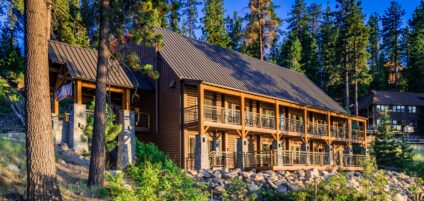
The Tahoe Semester is a study-away opportunity for college students to live the life of the mind, body, and spirit together right on the shore of Lake Tahoe. Immersed in outstanding courses, the beauty of creation, a community where they can be known, and a place to grow deep roots of faith.
The Tahoe Semester was founded in 2020 in collaboration with Azusa Pacific University. In response to Covid-19, the Tahoe Semester was suspended, but Zephyr Point offered a modified study term for students whose universities had gone online, known as “The Tahoe Getaway Term”.
In 2022, the hope is to restart The Tahoe Semester program in partnership with the Association of Presbyterian Colleges and Universities.
https://www.tahoesemester.org/
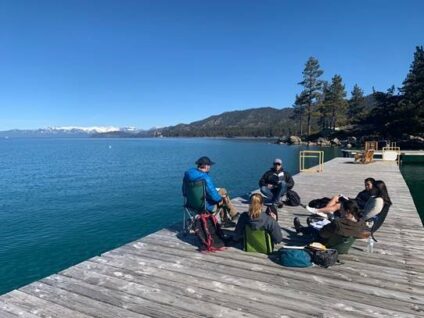
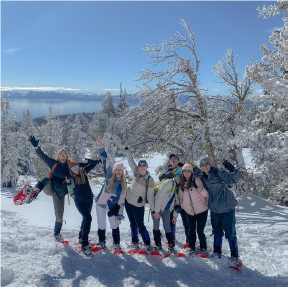
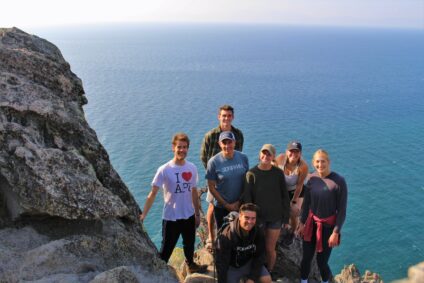

When the Covid-19 pandemic hit in March of 2020 Zephyr Point, like most of the country, was essentially closed for business. With little income and ongoing financial obligations it wasn’t clear what the future held for Zephyr Point. But in the shadow of the pandemic longtime supporters rallied, the Zephyr Point Board of Directors became more involved, a rate structure review was implemented, and a reorganization of the Zephyr Point management team was accomplished. Together these initiatives positioned the organization to emerge stronger than before. Zephyr Point will celebrate 100 years of ministry in 2024. Buoyed by the knowledge that with God all things are possible, we are looking forward to the next 100 years!
